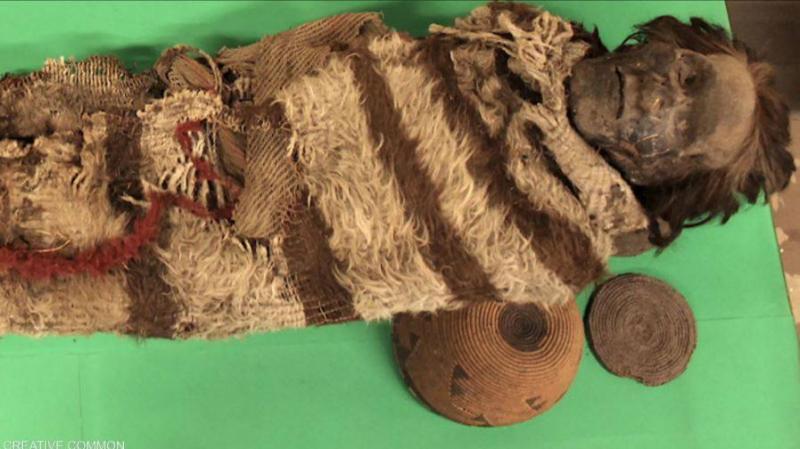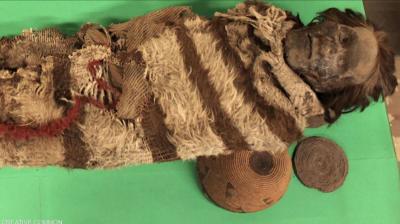Scientists have recently opened a new window into our human history by discovering the possibility of extracting human DNA from a sticky, cement-like substance produced by female lice thousands of years ago. In a study published on Tuesday in the journal "Molecular Biology and Evolution," researchers successfully recovered DNA from the substance adhering to hair taken from mummified remains dated between 1500 to 2000 years ago.
The researchers attribute this DNA discovery to skin cells from the scalp becoming coated with a sticky material – similar to cement – that is produced by female lice to securely attach each egg, known as "nits," to the base of hair strands.
**Secrets of the Past**
Analysis of this newly recovered ancient DNA – which was of better quality than that retrieved through other methods – revealed clues about human migration patterns in South America. This new approach may allow the study of numerous unique samples of human remains, where bone and tooth samples are not available.
Alejandra Birotti, an assistant professor of invertebrate biology at the University of Reading in the UK and the lead researcher, stated, "This discovery is reminiscent of a scene from the movie 'Jurassic Park,' where dinosaur DNA is obtained from amber-encased mosquitoes from the era of dinosaurs." She added, "We have shown how our genetic information can be preserved by the sticky substance produced by lice on our hair, and lice biology can provide valuable clues about how people lived and died thousands of years ago."
Furthermore, she noted, "In recent years, there has been an increasing demand for DNA samples from ancient human remains, as we seek to understand migration and diversity in ancient human populations. Because primates have accompanied humans throughout history, this new method could open the door to a goldmine of information about primates, leveraging unique samples."
Until now, scientists have preferred to extract ancient DNA from the dense bones of skulls or from inner teeth, as these samples provide better quality DNA. However, skull and tooth remains are not always available; in some cultures, it may be unethical to sample original remains, or due to severe damage caused by sampling methods that compromise future scientific analysis.
Hence, recovering DNA from the sticky substance produced by lice presents an ideal solution, especially since lice eggs commonly exist on the hair and clothing of well-preserved mummified humans.
**Analysis Results**
The research team extracted DNA from samples collected from several mummified remains in Argentina, which belonged to individuals who arrived around 1500 to 2000 years ago in the Andes mountains in San Juan province, central-western Argentina. The team also examined lice eggs on hair from a person used in fabric from Chile, as well as a sample taken from a shriveled head of ancient Jivaros human remains in Amazonian Ecuador.
DNA analysis revealed the sex of each mummy and a genetic link between three of the mummies and humans in the Amazon from 2000 years ago. It also shows for the first time that the indigenous populations of San Juan province migrated from the lands and rainforests of the Amazon in northern South America (currently southern Venezuela and Colombia).
Researchers indicated that the analysis results revealed that all studied ancient human remains belong to mitochondrial lineages established in South America. A surprise was the discovery of the first direct evidence of Merkel cell virus in the DNA of one of the mummies. This virus, discovered in 2008, causes a rare type of skin cancer, and this discovery opens the door to a new hypothesis suggesting that head lice may have transmitted the virus.
Examinations also indicated that the mummies may have been exposed to extremely cold temperatures at the time of their death, and that the cold likely played a role in their demise.
It is worth noting that the study was conducted by scientists from the University of Reading in collaboration with the National University of San Juan in Argentina, Bangor University in Wales, the Oxford University Museum of Natural History, and the University of Copenhagen in Denmark.




